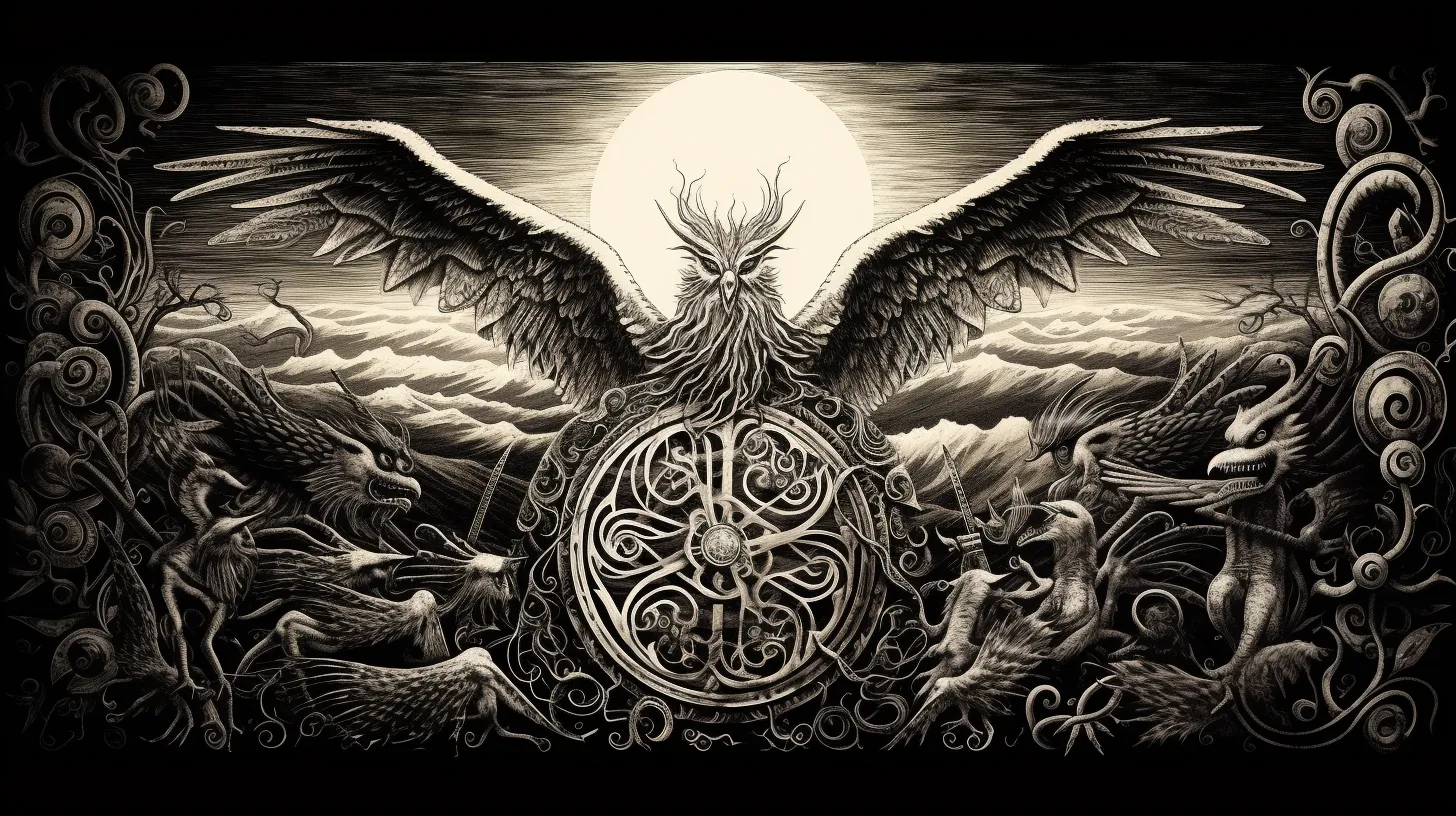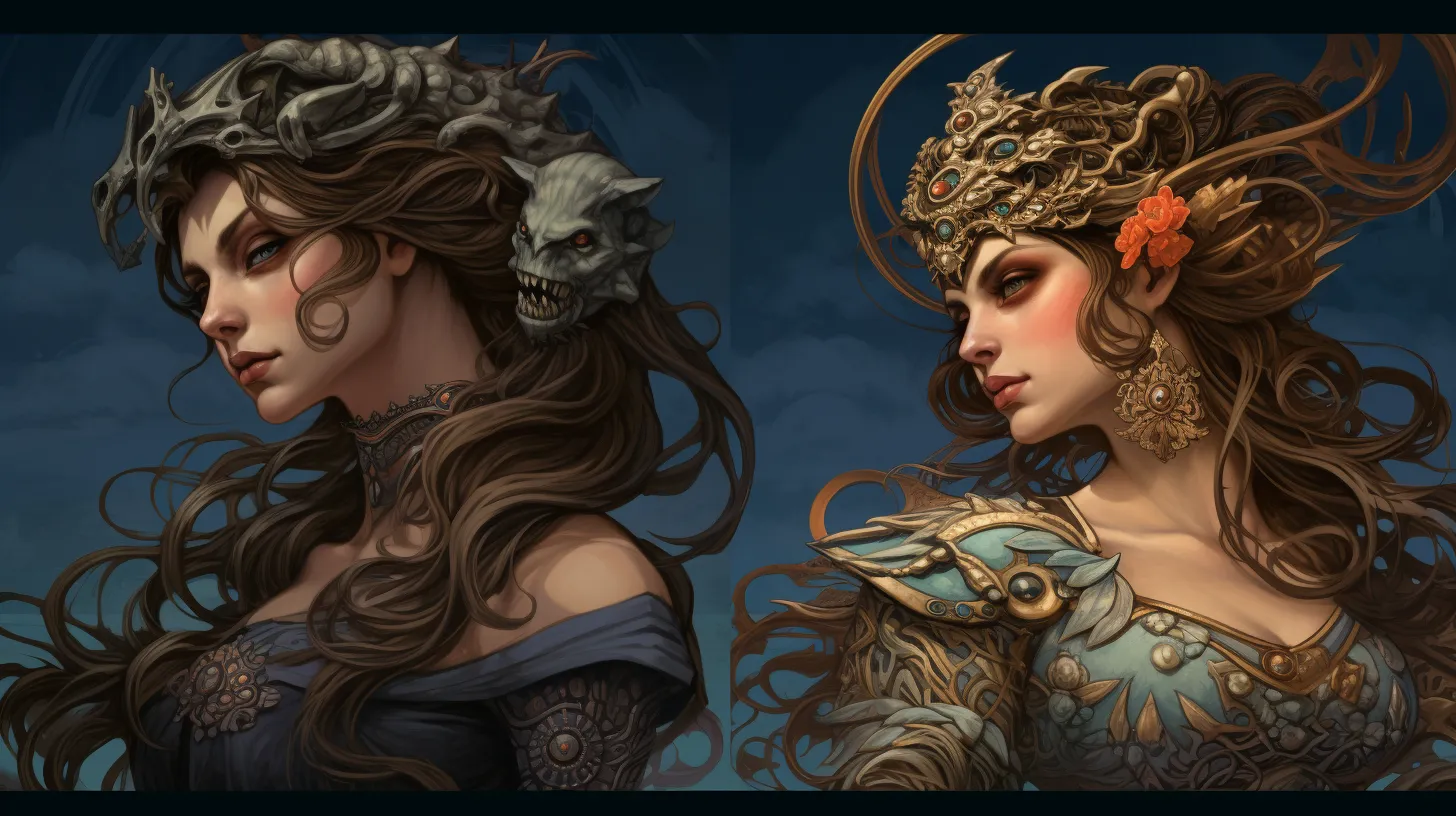In the rich mosaic of Norse mythology, the mysterious World Tree, Yggdrasil, stands as a pivotal symbol of unity and cosmic structure. It represents more than mere folklore; it is the central pillar around which the Nine Worlds rotate, shaping fates and enabling interactions across different planes of existence.
‘Secrets of Yggdrasil: World Tree Unveiled’ takes readers deep into the heart of this ancient and venerated symbol, examining its key role in Norse beliefs, the diverse life it supports, and the broader meaning of sacred trees.
This book reveals the enigmas cloaking Yggdrasil, guiding readers through ancient prophecies and the lasting fascination with this hallowed symbol.
Within its chapters, seekers will find the eternal mysteries that have beckoned to those wishing to understand the fabric of reality.
‘Within the roots and branches of Yggdrasil lie stories as old as time itself—veins that pulse with the lifeblood of myth.’
Yggdrasil’s Role in Norse Cosmology
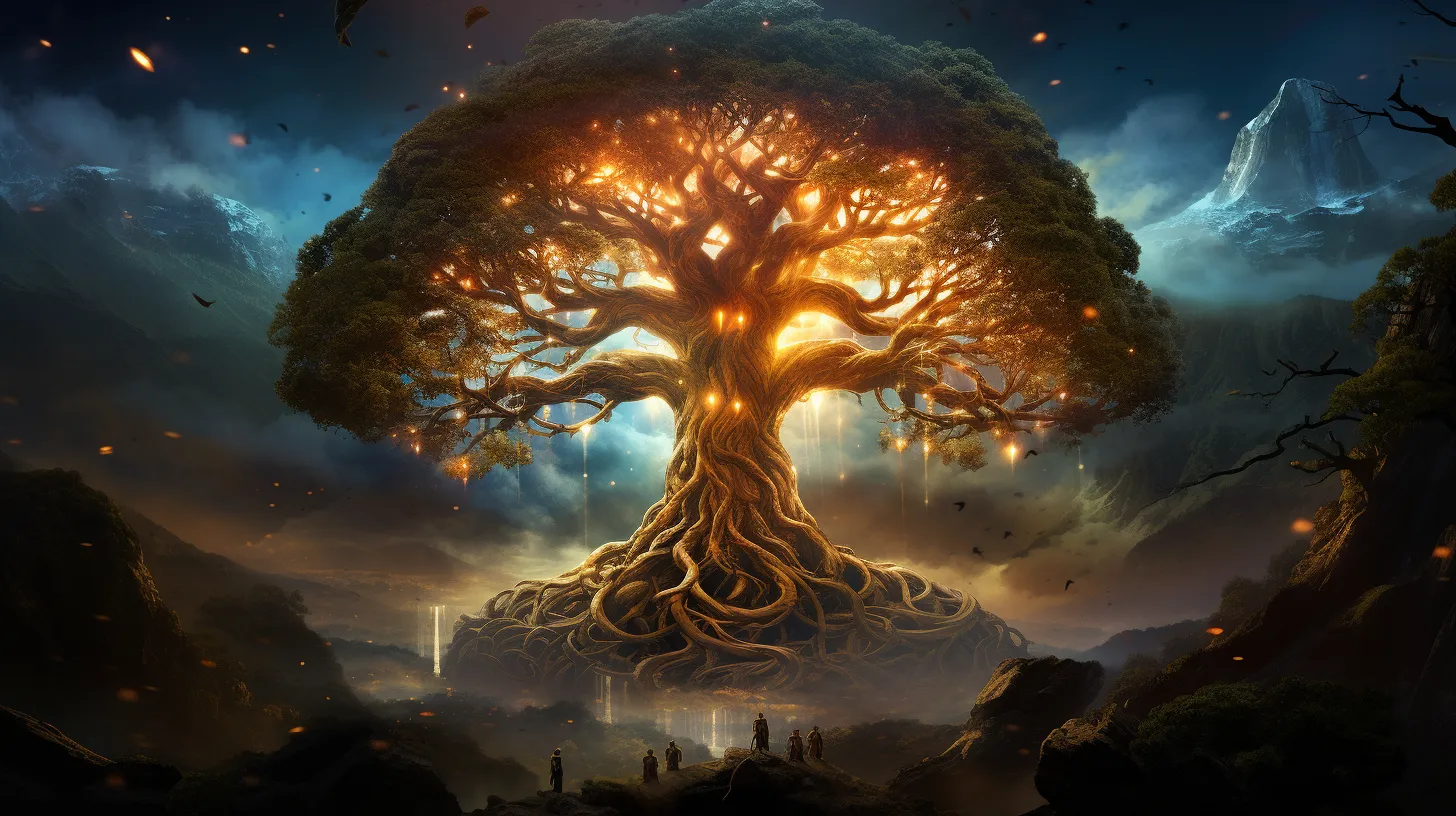
Yggdrasil served as the central axis of Norse cosmology, connecting and supporting the Nine Worlds in Norse mythology. Its vast branches and deep roots intertwined the fates of all beings, overseen by the Norns at the Well of Urd.
Yggdrasil’s influence on fate and destiny was profound, as the Norns measured and wove the destinies of all living things at its roots, shaping the course of existence. The tree’s significance went beyond mere physical presence; it represented the interconnectedness of all life, the eternal cycle of creation, existence, and eventual rebirth.
Yggdrasil stood as a powerful symbol of cosmic order and the intricate web of fate that bound all beings in the Nine Worlds, emphasizing the inextricable link between the past, present, and future.
Intriguing Ecosystem of Yggdrasil

An intriguing ecosystem thrived within the World Tree, with various creatures and beings inhabiting its branches and roots.
The giant eagle perched in the upper branches, while the smaller hawk, Vedrfolnir, lived on the eagle’s head, their interactions shrouded in mystery.
The eagle and the serpent Nidhogg on one of the World Tree’s roots engaged in a continuous exchange of insults through a squirrel named Ratatosk.
Sacrifices at sacred trees, including Yggdrasil, played a vital role in Norse mythology, binding the inhabitants of the Nine Worlds to the tree’s wellbeing and the fate of mankind.
The intriguing relationships and interdependencies within Yggdrasil’s ecosystem reveal a complex web of connections, reflecting the interconnectedness of all life in the Norse cosmos.
Cultural Significance of Sacred Trees

The cultural significance of sacred trees is deeply rooted in ancient Germanic religion and plays a pivotal role in connecting men, gods, and the dead. Sacred trees held a profound symbolic and mythological significance, serving as the focal point for ritual practices and spiritual communion.
These revered trees were not merely physical entities but rather embodiments of divine presence, embodying the interconnectedness of the cosmos. Symbolizing the axis mundi, they bridged the earthly realm with the divine, serving as conduits for communication with otherworldly beings and ancestral spirits.
Ritual practices conducted at these sacred trees were integral to the religious and spiritual life of ancient Germanic societies, offering a conduit for divine intervention and guidance. Despite the destruction of many sacred trees by Christian rulers and missionaries, their spiritual significance and mythological symbolism continue to resonate through the ages.
Mysteries Surrounding Yggdrasil
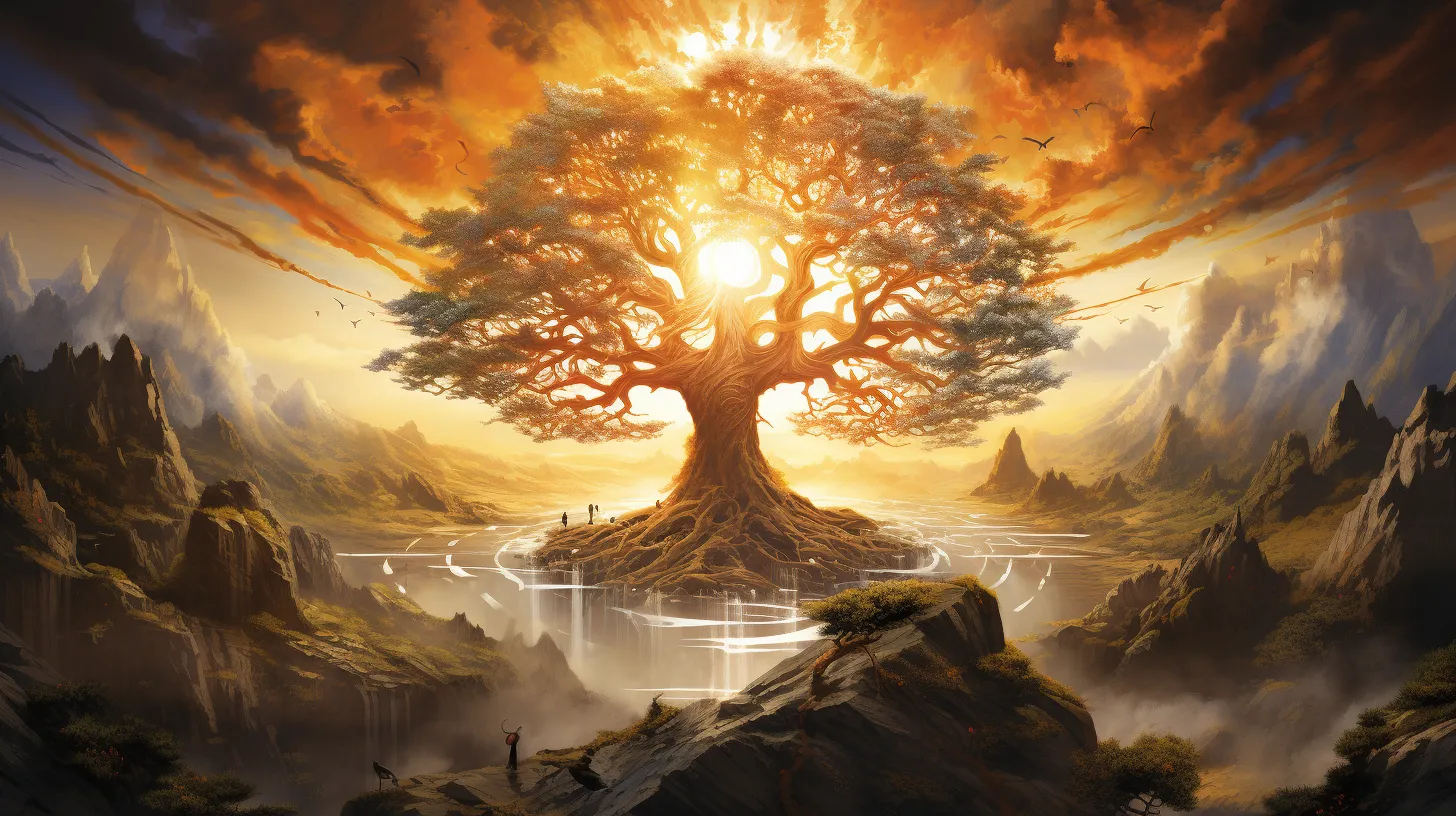
The enigma surrounding ancient Norse cosmology’s central element persists as scholars grapple with its enigmatic origins and symbolic significance.
- Yggdrasil’s Mythical Origins
- The tale of Yggdrasil’s birth remains shrouded in mystery, with conflicting accounts of its creation.
- Some sources hint at the possibility of Yggdrasil being a remnant from a primordial era, while others speak of its emergence from a seed.
-
The World Tree’s enigmatic origins continue to captivate the imagination, evoking a sense of wonder and curiosity.
-
Yggdrasil’s Connection to the Afterlife
- Yggdrasil’s profound association with the afterlife is a source of fascination and intrigue, as it served as a conduit between the realms of the living and the dead.
- The Well of Urd, nestled at the roots of Yggdrasil, was believed to be the seat of fate and destiny, adding to the allure of the tree’s mystical significance.
- The intricate interplay between Yggdrasil and the afterlife beckons further exploration, inviting contemplation on the nature of existence and transcendence.
Yggdrasil’s Prophetic Legends
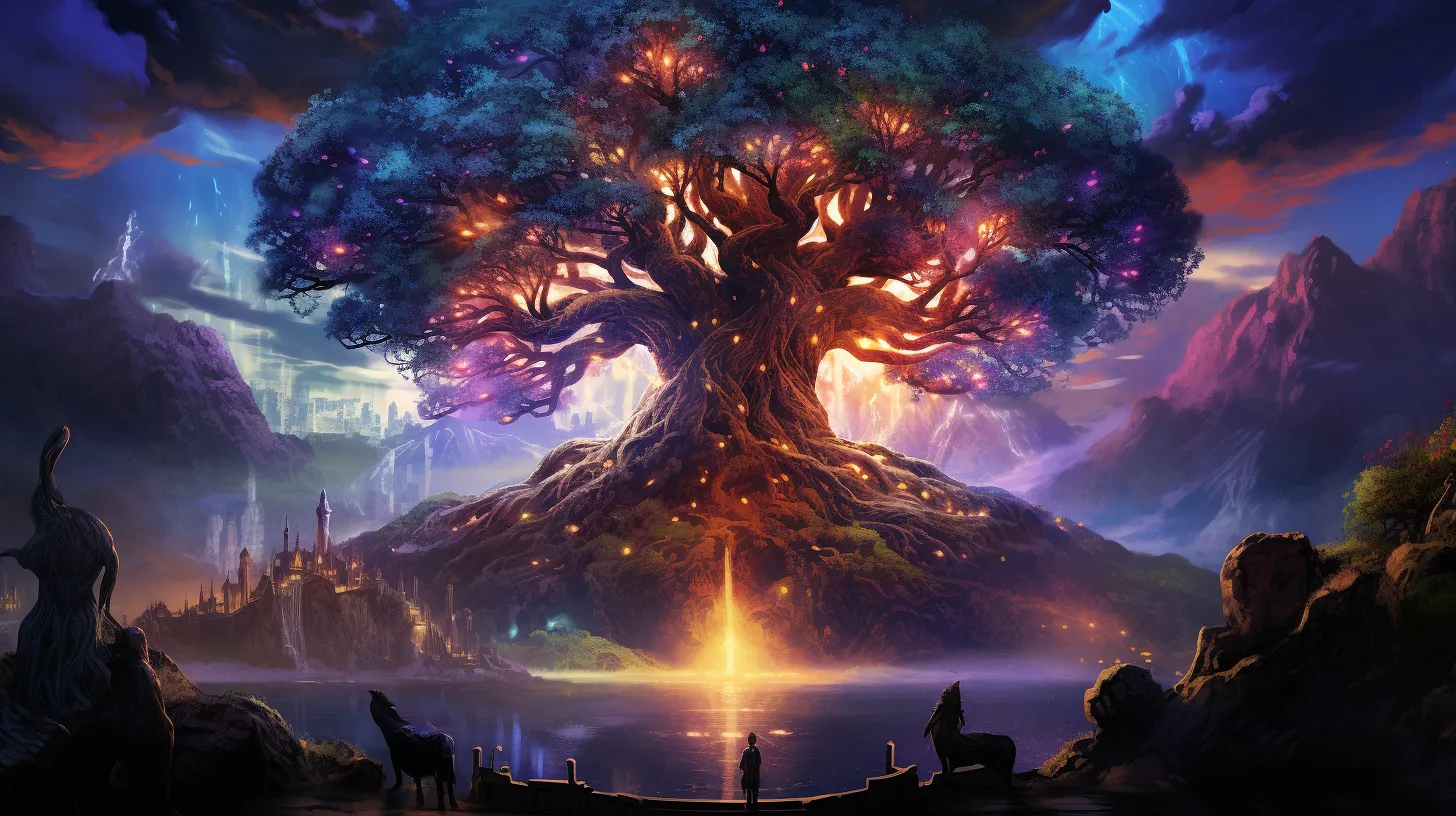
Yggdrasil’s Prophetic Legends have long fascinated scholars and enthusiasts of Norse mythology, offering insights into the future as envisioned by ancient beliefs.
The World Tree’s connection to fate is deeply embedded in its role as a conduit between the Nine Worlds, influencing the destinies of gods, men, and the deceased.
In the afterlife, Yggdrasil’s significance is profound, as it serves as a focal point for the Norns to measure and weave the fates of all living beings at the Well of Urd.
Its roots reaching into the realm of the dead underscore its pivotal role in the cosmic cycle.
The prophetic legends surrounding Yggdrasil evoke a sense of control over destiny, intertwining the past, present, and future within the intricate fabric of the World Tree.

